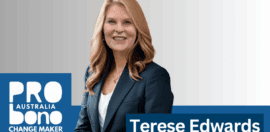They’re Rich, Unelected and Shaping Public Policy
13 August 2015 at 11:12 am
There are only 4,600 “high wealth individuals” in Australia with personal assets of $30 million or more, but despite making up just 0.04 per cent of taxpayers, these mega-rich people are shaping public policy at an alarming level, writes Ian McAuley from the University of Canberra in this article originally published in The Conversation.

In the United States, businessman-turned-presidential-hopeful Donald Trump has been leading the pack for Republican pre-selection. In Australia, we have seen billionaire miner Andrew Forrest take the front seat in policy development when the Prime Minister, Tony Abbott, asked him to lead a review of Indigenous training and employment programs.
Thirty-five years of widening income disparities have produced a sizeable number of “high wealth individuals” – the Australian Taxation Office’s term for 4600 Australians (or 0.04 per cent of taxpayers) with personal assets of $30 million or more. Among them are 49 on the BRW Rich List with assets of $1 billion or more (topped by Gina Rinehart with $14 billion).
On the surface, it could be said that billionaire Clive Palmer is the most obvious example of Australia’s super-rich wielding influence. But the equally important point to make is that as leader of one of the handful of independent Senators denying the Coalition a Senate majority, Palmer is unusual in being both elected and bound by the transparency of the parliamentary system.
It’s the question of whether the unelected super-rich are exercising a strong influence on public policy and, if so, whether such influence thwarts the interests of ordinary Australians and undermines our democracy.
There is no simple answer to this question because there is no clearly identifiable commonality to their means of influence or to their interests. But when they do have a strong voice there are risks which policymakers should be aware of.
It is not a new phenomenon
Even when Australia was far more egalitarian there were politically influential tycoons. Reg Ansett used his political influence to shape aviation policy (the “two-airline policy”) in the postwar years. Bob Hawke was well known for his friendships with those at the top end of town, most notably Alan Bond, but it will never be known how much and in what direction they influenced his policy thinking. Dick Smith (57 on the BRW Rich List) has been a consistent public voice on the technicalities of aviation policy.
Also there have been the media families – Fairfax, Packer and Murdoch – all influential in their own ways. A point of contention has been whether they pursue personal political ideologies or commercial interests that lead them to favour political parties. But personal ideology seems to be the most compelling explanation for Murdoch papers’ uncritical support of Coalition governments in recent years, at least in the face of The Australian’s continuing unprofitability.
Both Gina Rinehart and Andrew Forrest fronted up publicly against the mining tax, with Forrest in particular pumping public sentiment against it by characterising the tax as a threat to the jobs of average Australians.
But the main political influence came from the mining lobby groups – and the very large and influential corporate groups that fund them. It was later disclosed that the mining industry (including the Minerals Council of Australia and major miners BHP and Rio) had spent a total of $22 million on a marketing campaign that killed off the tax and was cited as a factor in the ousting of Kevin Rudd as Prime Minister.
One of the clearest examples of Forrest’s influence on public policy has been the introduction of a trial of the cashless welfare card, an idea he originally championed to combat Aboriginal disadvantage and welfare dependency.
Yet his PR campaign to bring about a public inquiry into the iron ore production strategies of his larger competitors, BHP and Rio Tinto, was less successful. Tony Abbott had initially appeared to countenance the idea of an inquiry into Forrest’s claim that the two big miners were artificially inflating production in order to drive the price down and force out smaller players – such as himself.
But then Treasurer Joe Hockey knocked back the idea, following on from rare public statements by BHP’s Andrew Mackenzie and Rio’s Andrew Harding.
In this instance at least it seems corporate power has prevailed over individual power.
There is no discernible pattern in the ways the rich influence, or attempt to influence, public policy, and that should be hardly surprising. By and large they’re individualists, not given to collective action. And it is often very difficult to gauge particular agendas that may be pursued through covert channels of influence (such as Rinehart’s past stake in Fairfax Media and current 10 per cent holding in Network Ten, both of which have been interpreted as a desire for influence over media policy.)
In studying the political desires of very wealthy Americans, Benjamin Page and Cari Lynn of Northwestern University found that they had a disproportionate influence on public policy. Yet it was difficult to find any common pattern, apart from general evidence that they were less supportive of welfare spending and of spending on health and environment programs, more oriented to market liberalisation, and more liberal on social issues than most Americans.
But while the very rich held these views, they closely aligned with the views of better-off Americans generally. That is, the study found no pattern of beliefs unique to the very wealthy.
But there are risks
A recent Economist Lex column speculates on an America that has come to accept ever-widening wealth disparities by turning to a far greater role for philanthropy in funding public goods such as medical research, infrastructure and higher education.
It’s a provocative scenario, and it carries two problems. One is that philanthropists may over-estimate their own contribution, believing that philanthropy can displace major public programs, and will use their influence to curtail public spending. But any replacement of public revenue would require a massive increase in philanthropy: even in the US, where philanthropy is strong, it still accounts for only 2% of GDP.
The other risk is that private giving is likely to be pro-cyclical, drying up when it is most needed, while conventional public spending is counter-cyclical.
A more general issue is that the very rich tend to live in a world apart from the rest of the population. Anyone who has travelled recently will have noticed that some airlines have scrapped first class – those who once rode first class now have their own private airplanes. No more do they have to share with lesser mortals the congested trip to the airport or the inevitable flight delays. They are less reliant on public services – public transport, public schools, public hospitals – than most Australians, and generally have less opportunity for social mixing.
It’s hard to imagine that those living in such isolation could understand the needs of the other 99.96 per cent of Australians.
About the author: Ian McAuley is a lecturer in public sector finance at University of Canberra.








